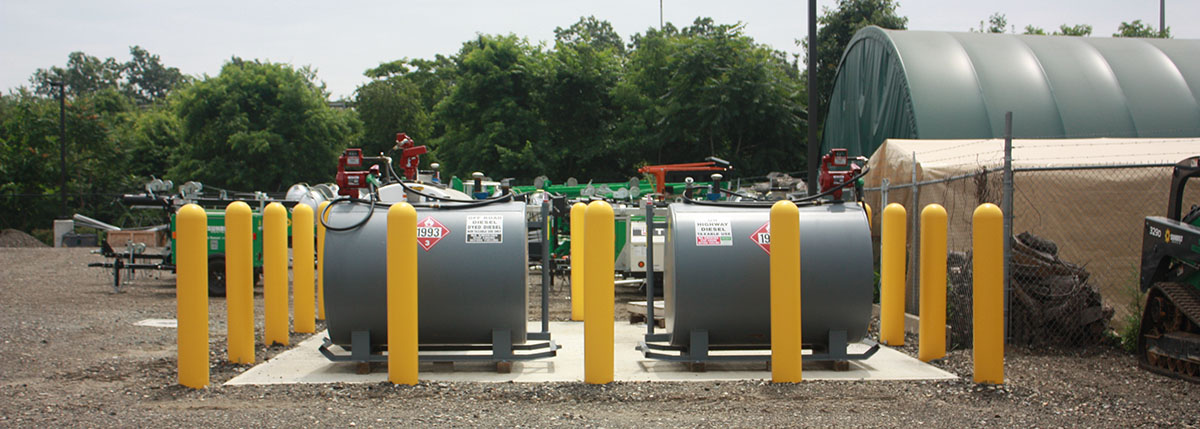Manufacturing sectors and industrial entities hold a large segment of the economy. As a result, they’re always in need of reliable storage units to store huge quantities of petroleum and fuel products. To resolve the needs of these sectors, Aboveground Storage Facilities are becoming more and more adopted as reliable storage units.
The Advanced technology in aboveground storage tanks supports its robust engineering that brings perfection to meet customer needs. These large containers are usually made of metal and resting on top of the ground, designed to temporarily hold a number of substances that can range from water to crude oil to various chemical products. Further, the blog will help you understand aboveground fuel tanks’ increased demands.
Why Aboveground Tank?
Aboveground tanks are specially designed to store hazardous and combustible substances in bulk quantities safely. Well-made and installed aboveground fuel tanks are always better options than underground ones. It’s because they spot leaks snappily and grease visual analysis. Besides that, they can be painted to help erosion, making them less susceptible to leakage. Double-walled tanks are ideal for all purposes as they cover the inner tank from the hazards of violent heat, downfall, and cracks.
Standard That Keeps ASTs Stand Tall
One of the numerous standards applicable to aboveground tanks is API 653, “Tank Inspection, Reconstruction, Alteration, and Repair.”It was developed and published by the American Petroleum Institute (API). It provides guidelines for examining, forming, revising, and reconstructing aboveground storehouse tanks used in petroleum and chemical diligence.
STI SP001 was released in 2000 and covers examination conditions for welded essence, shop-fabricated, and small field-erected tanks, among other effects. The federal government also regulates aSTs (Aboveground Storage Tanks) in the United States under 40 CFR 112, which provides certain minimal conditions for how storage tanks are designed, managed, and supervised.
The Environmental Protection Agency (EPA) places redundant conditions on any installations not associated with transport that have an aggregate aboveground fuel storage tank capacity greater than gallons. In addition to general regulations, these installations must also fulfill special Spill Prevention Control and Countermeasure (SPCC) regulations. So it is because rupture or leak in ASTs can trigger disastrous damage to the surroundings, contaminating rivers and lakes and jeopardizing human lives.
Further, you can read more to know about ASTs related defined standards
Types of Industrial Aboveground Storage Tank Design:
Different types of aboveground storage tank designs are used according to the suitability of the product (crude oil to various chemicals). Each design of the aboveground tanks is dedicated to satisfying industrial demand for reliable storage. Here are some of the types of above ground storage tank designs:
- Fixed-roof tanks: These storage tank designs are designed to have a cone or domed-structured roof permanently attached to its spherical shell, which is primarily utilized for storing water.
- Variable Vapor Space Tanks: These aboveground storage tanks are globular-structured tanks designed to maintain structural integrity at high pressures.
- LNG tanks: These are specialized design tanks used to hold liquified natural gas that you can install aboveground and underground as per your demand.
- Domed External Floating Roofing Design: They’re analogous to the external floating roof tanks, except the roof is lighter in structure.
- Internal floating roof Design: These tanks are equipped with floating roofs, which are covered with fixed roofs. Similar tanks are specially designed to ride severe rainfall conditions like the rain lashing or the hazards of strong winds.
- External floating roof Design: Similar tanks are designed to store crude canvas and petroleum products in bulk safely. They have a spherical shell made of a sword on top, which remains open and floats on the face of the fluid stored inside the vessels.
- Horizontal tanks: These aboveground storage tank designs are best suited to hold water and chemicals in bulk without seepage. The units are lower in size and can be relocated and installed with fewer efforts.
- Pressure Tanks Design: They are made to store liquids and gasses at pressure vastly different from normal air pressure tank design. These are generally made of fiberglass with sizes ranging from 2 to 500 liters. In addition, these tank designs have expandable vapor reservoirs to manage vapor volume oscillations caused by atmospheric pressure and temperature changes.
We hope the above-provided information will give you adequate information about the Aboveground Tanks, Standard to Fulfill. Also, defining various ASTs designs will help you understand the use of the multiple ASTs designs to store various industrial resources. And If you are someone who’s looking for the finest and most accurate information related to ASTs related services, then feel free to connect here at Chester Design Group, LLC. You’ll get industrial-grade knowledge and services related to aboveground storage tanks.

